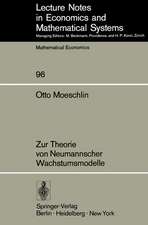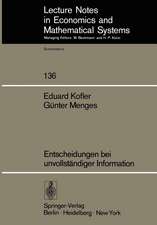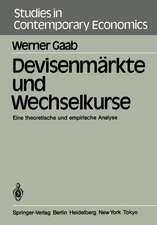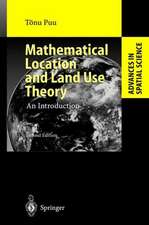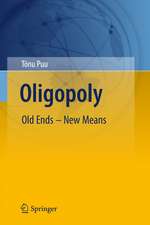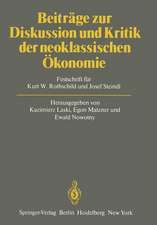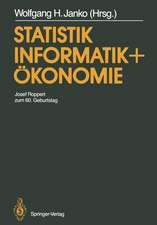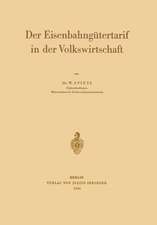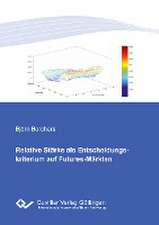Arts, Sciences, and Economics: A Historical Safari
Autor Tönu Puuen Limba Engleză Hardback – 14 noi 2014
The evolution within arts and sciences, which often seems to return to previously scrapped ideals, is illustrated by detailed case studies, in which the importance of changing tastes, rather than progress proper, is emphasized.
The author attempts an understanding for this using Darwinian evolution in combination with modern mathematical complexity theory, expressed in terms accessible to the general reader.
The second edition is extended and updated especially as regards the illustration material.
| Toate formatele și edițiile | Preț | Express |
|---|---|---|
| Paperback (2) | 383.50 lei 6-8 săpt. | |
| Springer Berlin, Heidelberg – 24 sep 2016 | 383.50 lei 6-8 săpt. | |
| Springer Berlin, Heidelberg – 14 oct 2010 | 826.10 lei 6-8 săpt. | |
| Hardback (1) | 390.84 lei 6-8 săpt. | |
| Springer Berlin, Heidelberg – 14 noi 2014 | 390.84 lei 6-8 săpt. |
Preț: 390.84 lei
Nou
Puncte Express: 586
Preț estimativ în valută:
74.81€ • 81.29$ • 62.88£
74.81€ • 81.29$ • 62.88£
Carte tipărită la comandă
Livrare economică 21 aprilie-05 mai
Preluare comenzi: 021 569.72.76
Specificații
ISBN-13: 9783662441299
ISBN-10: 3662441292
Pagini: 225
Ilustrații: XXIV, 189 p. 80 illus., 53 illus. in color.
Dimensiuni: 155 x 235 x 20 mm
Greutate: 0.48 kg
Ediția:2nd ed. 2015
Editura: Springer Berlin, Heidelberg
Colecția Springer
Locul publicării:Berlin, Heidelberg, Germany
ISBN-10: 3662441292
Pagini: 225
Ilustrații: XXIV, 189 p. 80 illus., 53 illus. in color.
Dimensiuni: 155 x 235 x 20 mm
Greutate: 0.48 kg
Ediția:2nd ed. 2015
Editura: Springer Berlin, Heidelberg
Colecția Springer
Locul publicării:Berlin, Heidelberg, Germany
Public țintă
Popular/generalCuprins
Culture and Civilization.- Public Goods.- Patronage.- Changing Attitudes.- Evolution in Science.- Perfection in Art.- Modelling Evolution Through Structural Change.
Notă biografică
Tõnu Puu is a Swedish economist of Estonian descent. Puu worked as acting full professor of Economics at Uppsala University 1963-1970, where he received his Ph.D. and was appointed ordinary Professor of Economics by Royal patent at Umeå University in 1971. After emeritation in 2001, he works as senior professor at the Centre for Regional Science (CERUM). In 2014 he was awarded the Doctor Jubilaris of Uppsala University. Puu has published over 20 books and 120 scholarly articles in economics, philosophy and mathematics. Topics studied include portfolio selection, investment and production, philosophy of science (in collaboration with Sir Karl Popper), spatial economics, economics of the arts, nonlinear dynamic processes, oligopoly and business cycles.
Puu was Founder and Director 1987-2001 of the Nordic Baroque Music Festival and received in that capacity the Prize for extraordinary promotion of culture, awarded by the county government. Other musical interests are playing theviola da gamba, and being a "luthier", making his own instruments.
Puu was Founder and Director 1987-2001 of the Nordic Baroque Music Festival and received in that capacity the Prize for extraordinary promotion of culture, awarded by the county government. Other musical interests are playing theviola da gamba, and being a "luthier", making his own instruments.
Textul de pe ultima copertă
This book deals with the economic aspects of changing attitudes in arts and sciences. The effects of the public good character of culture, along with the very long production period and lifetime for its products, are emphasized, since both contribute to the failure of normal market solutions. Embodiment of ideas, and the consequences of modern reproduction technology for protection of property rights are closely examined.
The evolution within arts and sciences, which often seems to return to previously scrapped ideals, is illustrated by detailed case studies, in which the importance of changing tastes, rather than progress proper, is emphasized.
The author attempts an understanding for this using Darwinian evolution in combination with modern mathematical complexity theory, expressed in terms accessible to the general reader.
The second edition is extended and updated especially as regards the illustration material.
“Professor Puu (…) introduces a fourthapproach [to cultural economics].
(…) working it like a triangle, Arts, Sciences and Economics is, in a sense, inductive in nature. An observation made in one of the arts or the natural & engineering sciences (henceforth ‘sciences’) or economics is extended to cover the other two points of the triangle. The temporal plane of this triangle covers the pre-Renaissance to the 21st century with a special and loving emphasis on the Baroque.(...)
Professor Puu’s method reminds me of Pascal’s Pensées (…), it also reminds me of Goethe (…) Unlike Goethe, however, the ‘certain order’ achieved by Professor Puu is mathematical rather than intuitive or aesthetic in nature. Underpinning the text is the correlation between Arts, Sciences and Economics through mathematics. And mathematics covers the waterfront from probability to chaos theory (…) This underpinning does, however, reveal Professor Puu as having a very well developed mathematical mind (…). Similarly, his cultural and historical erudition cannot be faulted but rather must be praised. The text is rich in example. (…) This book is not a narrative with a beginning, middle and end. It is Professor Puu’s Pensées.
(…) Calculatory rationalism is not the only tool of economics. Arguably, this is one implication of the term ‘knowledge-based economy’. To such an economy, however, Professor Puu has made a most valuable and fascinating contribution.“(...)
Harry Hillman Chartrand, Book Review in Journal of Cultural Economics, vol. 31, number 1, 2007
The evolution within arts and sciences, which often seems to return to previously scrapped ideals, is illustrated by detailed case studies, in which the importance of changing tastes, rather than progress proper, is emphasized.
The author attempts an understanding for this using Darwinian evolution in combination with modern mathematical complexity theory, expressed in terms accessible to the general reader.
The second edition is extended and updated especially as regards the illustration material.
“Professor Puu (…) introduces a fourthapproach [to cultural economics].
(…) working it like a triangle, Arts, Sciences and Economics is, in a sense, inductive in nature. An observation made in one of the arts or the natural & engineering sciences (henceforth ‘sciences’) or economics is extended to cover the other two points of the triangle. The temporal plane of this triangle covers the pre-Renaissance to the 21st century with a special and loving emphasis on the Baroque.(...)
Professor Puu’s method reminds me of Pascal’s Pensées (…), it also reminds me of Goethe (…) Unlike Goethe, however, the ‘certain order’ achieved by Professor Puu is mathematical rather than intuitive or aesthetic in nature. Underpinning the text is the correlation between Arts, Sciences and Economics through mathematics. And mathematics covers the waterfront from probability to chaos theory (…) This underpinning does, however, reveal Professor Puu as having a very well developed mathematical mind (…). Similarly, his cultural and historical erudition cannot be faulted but rather must be praised. The text is rich in example. (…) This book is not a narrative with a beginning, middle and end. It is Professor Puu’s Pensées.
(…) Calculatory rationalism is not the only tool of economics. Arguably, this is one implication of the term ‘knowledge-based economy’. To such an economy, however, Professor Puu has made a most valuable and fascinating contribution.“(...)
Harry Hillman Chartrand, Book Review in Journal of Cultural Economics, vol. 31, number 1, 2007
Caracteristici
Gives a broad panorama of evolution in the arts and sciences Analyses the economic driving forces behind development in science and art using modern dynamics Detailed case studies and many colour illustrations Includes supplementary material: sn.pub/extras



